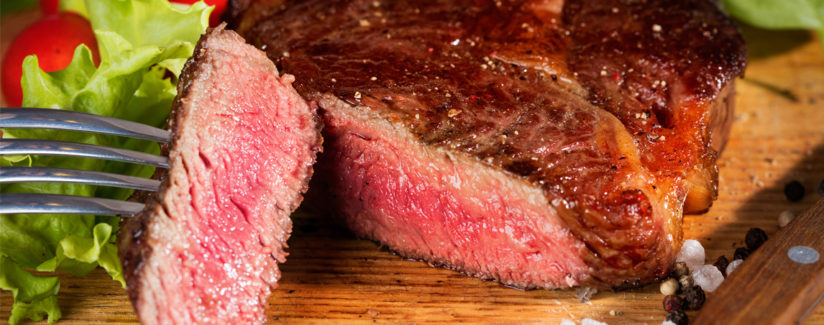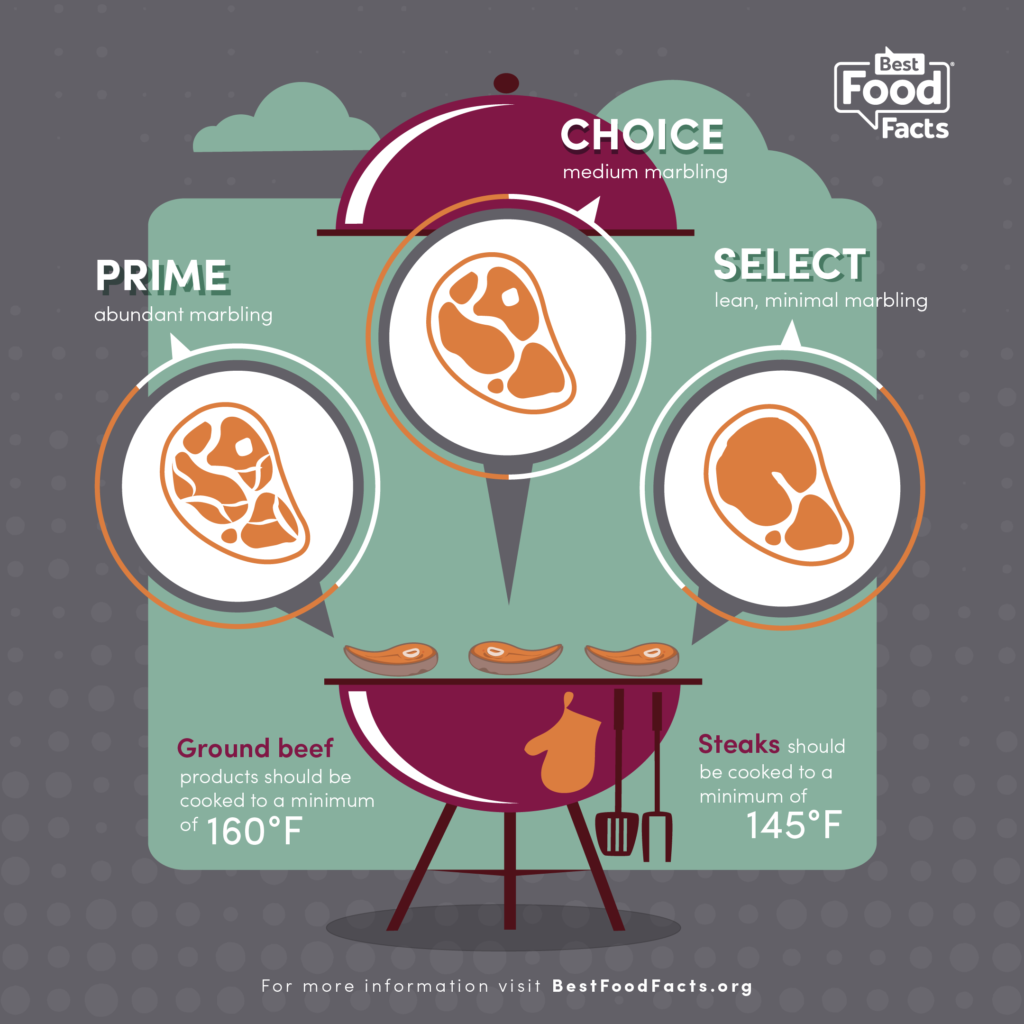
Meat – What’s Marbling Got to Do With It?
06/14/2017
The sizzle of steaks on the grill will make your mouth water. Selecting the steak and keeping it safe are important parts of the process. We had some questions about that – What is marbling, anyway? Why is there blood in the package? To get a better understanding, we reached out to Dr. Janeal Yancey, a meat science expert at the University of Arkansas.
So, what is marbling? Is it good or bad?
Dr. Yancey: “Marbling is the little flecks of fat found within the muscle of the meat cuts. Meat scientists call it intramuscular fat. Cuts with more marbling have a tendency to be more tender and to tolerate being cooked to greater degrees of doneness. If you like well-done steaks, you want cuts with more marbling.
“More marbling causes cuts to have slightly greater calorie and fat contents, but the change is pretty small. It isn’t really good or bad, just part of the steak!”
Does marbling affect the taste or quality of my steak?
Dr. Yancey: “Much of the flavor in meat cuts is derived from the marbling. More marbling results in a juicier and more tender eating experience. Marbling is the main component used to divide beef cuts in to USDA quality grades like Choice and Prime. Marbling scores are combined with maturity scores (the age of the animal) to determine those quality grades. Grades are used to assign value to cuts of beef. That way, a fancy restaurant can buy expensive Prime cuts and be sure that they get steaks that will be tender, juicy and flavorful.”
Beef cuts are separated into grades by the USDA:
- Prime: produced from young, well-fed beef cattle and has abundant marbling and is generally sold in restaurants and hotels
- Choice: high quality, but has less marbling than Prime
- Select: very uniform in quality and normally leaner than higher grades
The other grades, which include standard and commercial grades as well as others, are typically found in frozen or precooked products.
What should I look for when buying a steak at my grocery store?
Dr. Yancey: “You should buy what you like. Look for more marbling in cuts like ribeye and T-bone steaks since they are cooked at higher temperatures. Don’t worry about marbling as much in pot roasts.”
Sometimes there is red liquid in the bottom of the package of meat. What is it? Is it blood?
Dr. Yancey: “No, it is not blood, it is purge. Purge is a combination of water, lactic acid and color proteins called myoglobin. The myoglobin is what makes meat look red or pink. Muscle, and therefore, meat, is made largely of water. The water will slowly run out of the meat as it is processed, cut, aged, packaged, etc.”
Is purge only found in beef?
Dr. Yancey: “Purge is associated with all meat products. Lighter colored meats like chicken and pork may have lighter colored purge. Meats that have been ‘injected with a solution’ or marinated may have a tendency to have a little more purge because of the extra water added.”
Is purge safe? What should I do with it?
Dr. Yancey: “It is as safe as is the meat it’s coming from. It can’t be safely consumed without being cooked, but purge doesn’t indicate unwholesomeness or low quality.
“In ground meats and sausages, I add it back to my dish and just pour it right in the mixing bowl. Add a little salt and the muscle will reabsorb that water to contribute to the juiciness of your dish. In whole-muscle cuts, I would just throw it out with the packaging. Remember that purge is like uncooked meat and anything it touches needs to be cooked or washed with warm soapy water.”
Additional food safety tips when handling meat:
- Keep raw meat and other foods separate, even in the grocery cart and on the way home.
- Store your food at the proper temperature.
- Cook all meat, poultry and seafood to the safe minimum internal temperature.
When it comes to a good steak, marbling has a lot to do with it and following food safety makes it even better.


























